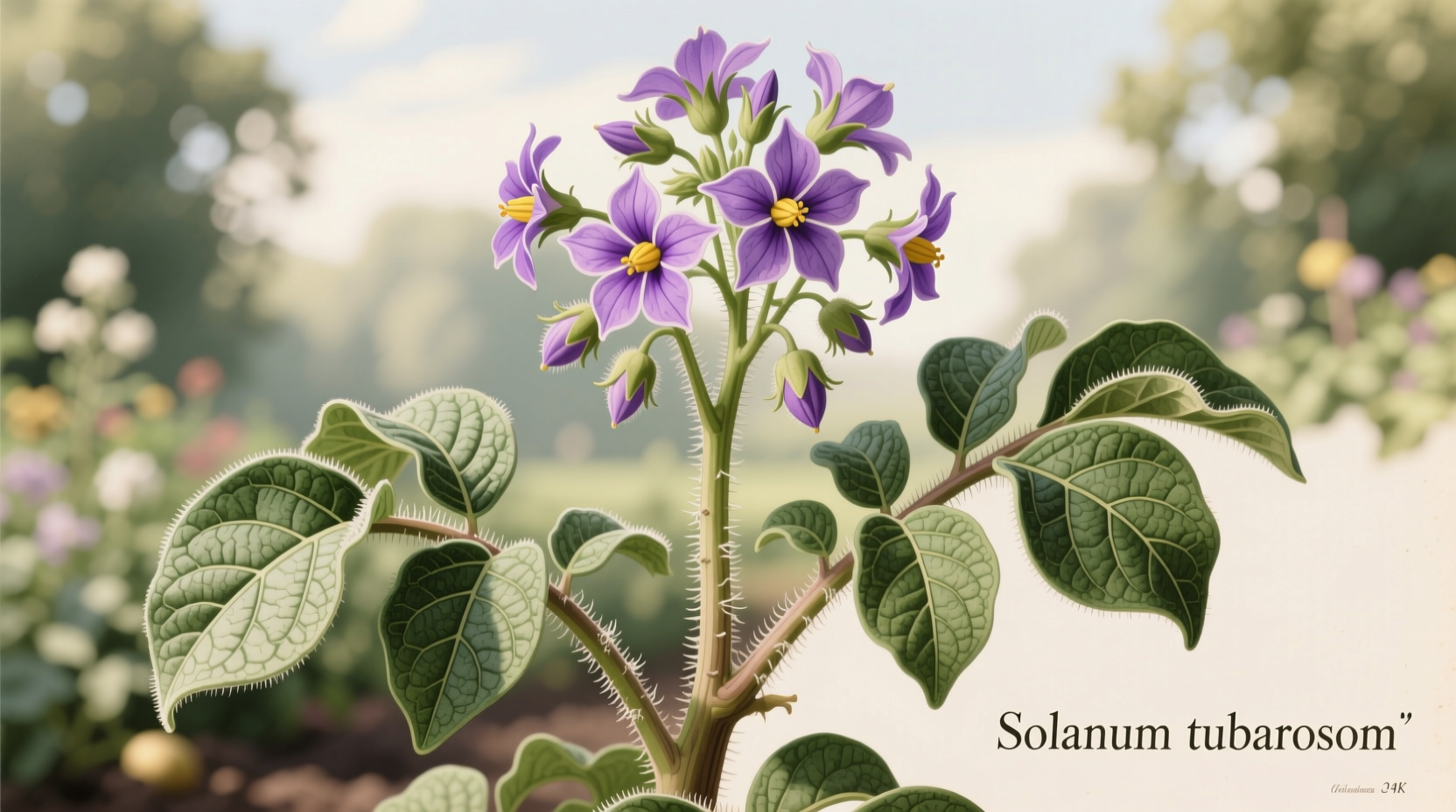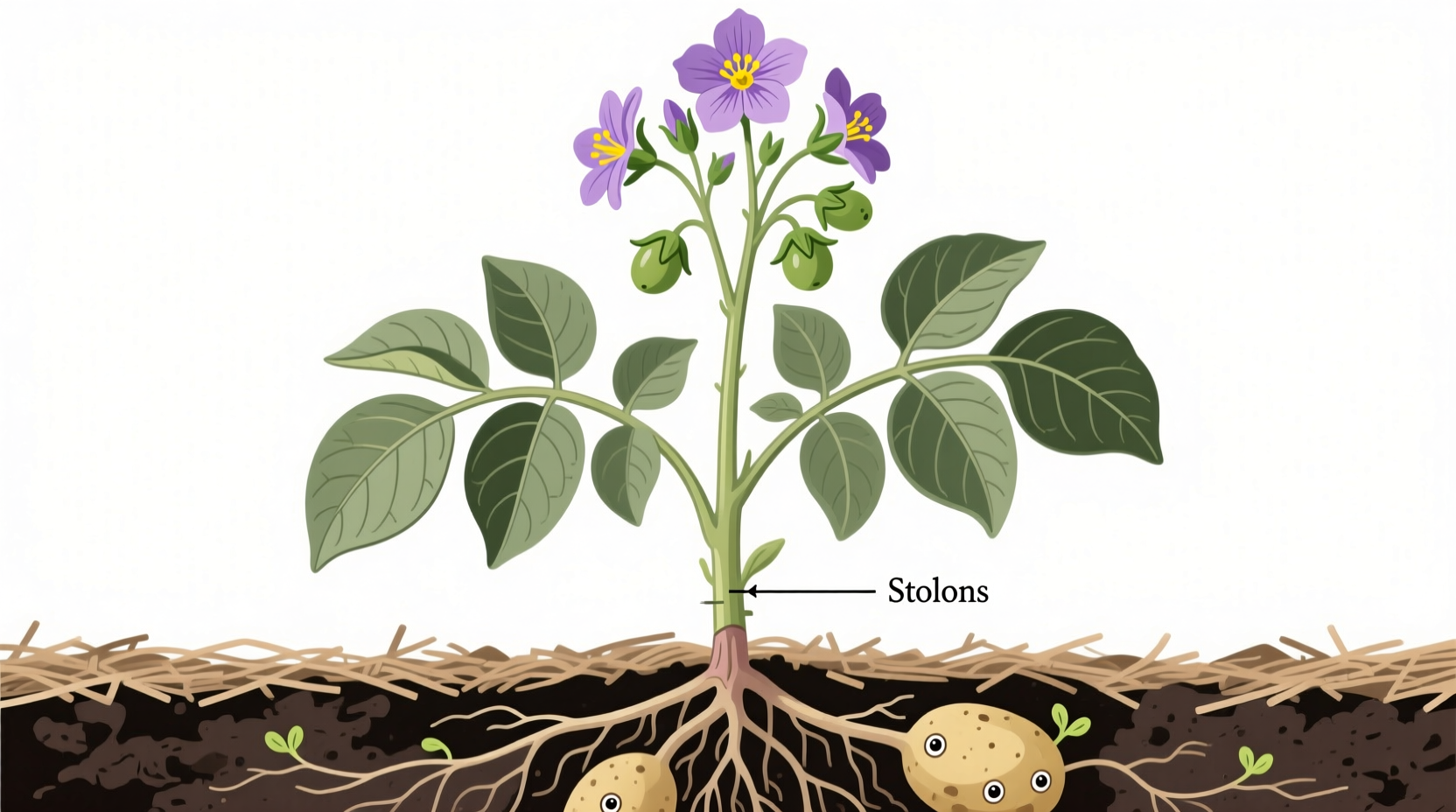Ever spotted an unfamiliar plant in your garden and wondered what do potato plants look like up close? Whether you're a home gardener checking your crop progress, a forager avoiding toxic look-alikes, or simply curious about this staple food's origins, this guide delivers precise visual identification details you can trust. You'll learn exactly how to recognize potato plants at every growth stage, distinguish them from dangerous nightshade relatives, and understand their seasonal transformations.
Basic Structure of Potato Plants
Potato plants (Solanum tuberosum) typically reach 1-3 feet in height with sturdy, slightly hairy stems that may develop a purple tint in certain varieties. The stems emerge from seed potatoes or "eyes" and form the plant's structural framework. Unlike many garden plants, potato stems grow both above ground (producing foliage) and below ground (developing stolons that become tubers).
Leaf Characteristics Through Growth Stages
Potato leaves follow a distinctive pattern that helps with identification:
- Early growth (2-4 weeks): Small, oval leaves with smooth edges appear in pairs along the stem
- Mid-season (5-8 weeks): Compound leaves develop with 5-9 leaflets arranged in a "V" formation
- Mature plants (9+ weeks): Fern-like foliage with dark green upper surfaces and lighter undersides
The leaves contain solanine (a natural defense compound), giving them a slightly sticky texture when touched. This characteristic helps distinguish them from similar-looking plants like tomato vines, which have more deeply lobed leaves.

Flower Identification Features
Many potato varieties produce flowers between 6-10 weeks after planting, though some never bloom. When present, these flowers provide key identification markers:
- Color ranges from white to pink or purple depending on variety
- Five-petaled structure with prominent yellow stamens
- Approximately 1-2 inches in diameter
- Often clustered in groups of 4-8 blooms
It's important to note that flower color doesn't indicate tuber color - white-flowered plants can produce red potatoes and vice versa. The presence of flowers signals that tubers are beginning to form underground.
Potato Plant Growth Timeline
| Weeks After Planting | Visible Characteristics | Underground Development |
|---|---|---|
| 1-2 | Green shoots emerge (¼-½ inch tall) | Roots developing from seed potato |
| 3-4 | Multiple stems, small oval leaves | Stolons beginning to form |
| 5-7 | Fern-like foliage, possible flowering | Tubers starting to swell |
| 8-10 | Full canopy, yellowing lower leaves | Tubers reaching mature size |
| 11-14 | Foliage dying back completely | Skin hardening on mature potatoes |
Distinguishing Potato Plants from Toxic Look-alikes
Correctly identifying what potato plants look like is crucial because they have dangerous relatives in the nightshade family. Use these key differences to avoid confusion:
- Deadly nightshade (Atropa belladonna): Has solitary bell-shaped flowers (not clustered) and shiny black berries (potatoes never produce above-ground fruit)
- Jimsonweed (Datura stramonium): Features large trumpet-shaped white flowers and spiky seed pods
- Wild tomato (Solanum pimpinellifolium): Has more deeply lobed leaves and produces actual fruit above ground
Remember that while potato plants themselves are safe to grow, their green parts contain solanine and should never be consumed. Only the underground tubers are edible after proper cooking.
Seasonal Changes in Potato Plant Appearance
Potato plants undergo dramatic visual transformations throughout their growing season:
- Spring: Bright green, rapidly growing shoots with delicate leaves
- Early summer: Full canopy development with possible flowering
- Late summer: Lower leaves yellowing as energy shifts to tuber development
- Early fall: Complete die-back of foliage signaling harvest time
These seasonal changes provide important visual cues for gardeners determining optimal harvest times. The appearance of flowers indicates tuber formation has begun, while yellowing foliage signals that potatoes are nearing maturity.
Practical Identification Tips for Gardeners
When trying to determine what do potato plants look like in your specific growing conditions, consider these practical tips:
- Check for the distinctive "V" shaped leaf arrangement unique to potato plants
- Look for small, round tubers forming along underground stems (stolons)
- Notice that stems remain green even as they thicken with maturity
- Observe that plants grow vertically rather than sprawling like sweet potatoes
- Remember that true potato plants never produce edible fruit above ground
For gardeners growing multiple varieties, note that russet potatoes typically have lighter green foliage while red-skinned varieties often show purple-tinged stems. These subtle differences can help identify specific types when visual characteristics matter for your gardening goals.
Do all potato plants produce flowers?
No, not all potato varieties produce flowers. While many common varieties like Russet Burbank do flower, some heirloom and specialty potatoes rarely or never bloom. Flower presence doesn't affect tuber development or edibility.
How can I tell if my potato plants are ready for harvest?
Potato plants signal harvest readiness when their foliage begins yellowing and dying back naturally. For mature storage potatoes, wait until 80-90% of the foliage has died. For new potatoes, harvest when plants begin flowering - tubers will be smaller but more tender.
Are potato plant leaves edible?
No, potato plant leaves and stems contain solanine, a toxic compound that can cause nausea and neurological symptoms if consumed. Only the underground tubers are safe to eat after proper cooking. Never consume any green parts of the potato plant.
What's the difference between potato plants and sweet potato plants?
Potato plants have upright growth with compound leaves and belong to the nightshade family, while sweet potato plants are vining with heart-shaped leaves and belong to the morning glory family. Potato tubers form on underground stems (stolons), while sweet potatoes are true root vegetables.











 浙公网安备
33010002000092号
浙公网安备
33010002000092号 浙B2-20120091-4
浙B2-20120091-4